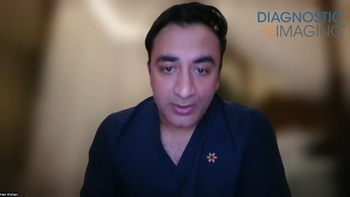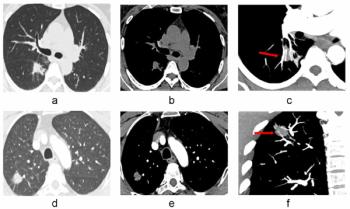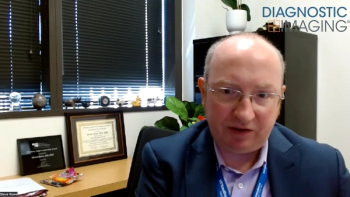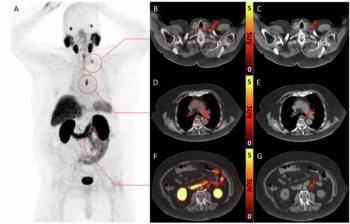
Interface firm builds OEM business
Signal Stream Technologies of Novato, CA, finalized its firstOEM supply contract with GE Medical Systems last month, providingadditional momentum to an already rapid business launch. The medicalimaging interface and image management company was started
Signal Stream Technologies of Novato, CA, finalized its firstOEM supply contract with GE Medical Systems last month, providingadditional momentum to an already rapid business launch. The medicalimaging interface and image management company was started inApril by former Adaptive Video president and co-founder MichaelFranco (SCAN 6/30/93).
Signal Stream's initial interface products, Mach 1 and Mach2, are plug-in image interface cards designed for IBM-type personalcomputers. The company shipped about 110 of these products toOEM customers, including Picker Nordstar and Fischer Imaging,during its start-up phase last year, according to George Ward,chairman and CEO.
Ward joined Signal Stream late last year. He brings extensiveindustry experience and connections to the start-up firm, havingserved as general manager of GE Medical Systems' x-ray and specialhealth-care groups in the mid-1970s.
After a decade heading up technology firms outside the industry,Ward returned to medical imaging in 1987 to serve as Philips'PACS business unit director. He left Philips in 1990 to work asa consultant, shortly before AT&T reduced its role in thePhilips CommView joint venture supplying large-scale, fully digitalpicture archiving and communications systems (SCAN 1/30/91 and7/3/91).
Mach 1 and Mach 2 cards are used by scanner vendors primarilyto connect their imaging systems with laser camera hard-copy outputdevices. The cards input digital images either through video frame-grabbingor direct DICOM 3.0-based digital connections. Mach 1 is soldto OEMs for less than $2000, Ward said.
Mach 2 technology uses a distributed processing concept, whichSignal Stream has expanded on with its new UniLink interface product.Two microprocessors run on each Mach 2 board, one for protocoltranslations and the other dedicated to image data managementtasks.
UniLink, which is offered as a complete 486 PC, has the capacityto run four Mach 1 or Mach 2 boards, providing four separate input/outputchannels on a single station. The base system price is $7500,with each I/O option costing an additional $7500. The PC's monitoris used for image management purposes, not display.
"This promises to deliver an economic solution to theotherwise extremely difficult problem of interfacing the installedbase (of non-DICOM-compatible scanners)," Ward said. "Itwill protect that installed base and extend its life in a waythat is quite elegant. If you had a clean piece of paper you woulddesign it with this distributed processing scheme."
An estimated 60,000 CT, MR, digital radiography, nuclear medicineand high-end ultrasound imaging systems are installed in the U.S.,Ward said. There may be 180,000 such systems in the field worldwide.
"That is a tremendous installed base. People aren't goingto replace that in order to get a network capability. This definesour opportunity," he said.
DECLINING MRI SALES and reimbursement rates point to an extensionof already long scanner lifetimes, said Franco, who serves SignalStream as president and chief technical officer. Some MR imagingsystems have been in the field for 15 years, he said.
"Now that the MR sales rate has dropped so substantially,the replacement rate has to drop off as well," Franco said.
Lower imaging reimbursement will stretch out scanner paybackperiods and reduce incentives to replace existing equipment, Wardsaid. At the same time, hospitals are eager for the cost savingsoffered by evolving digital information management technology.
"There are many reasons why health-care data interchange(HDI) networks are going to be a reality. That will put a windat the back of anyone who wants to sell connectivity offerings,"he said.
Some analysts estimate that regions in the U.S. could save4% of their total health-care costs with the implementation ofHDI networks, Ward said.
"If that is done nationally, there could be $36 billionin annualized savings. This would justify major (networking) investments,"he said.
Newsletter
Stay at the forefront of radiology with the Diagnostic Imaging newsletter, delivering the latest news, clinical insights, and imaging advancements for today’s radiologists.






























